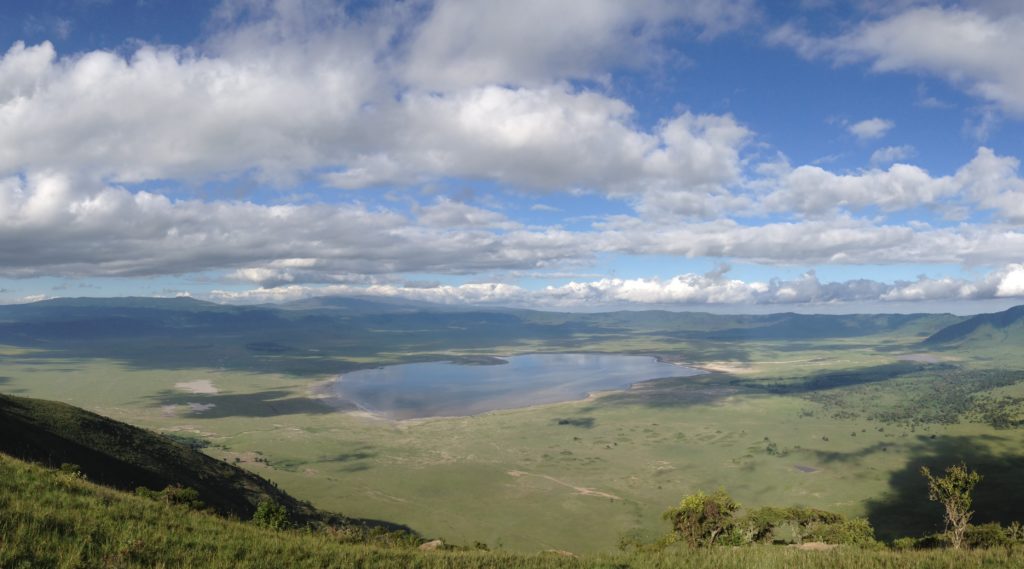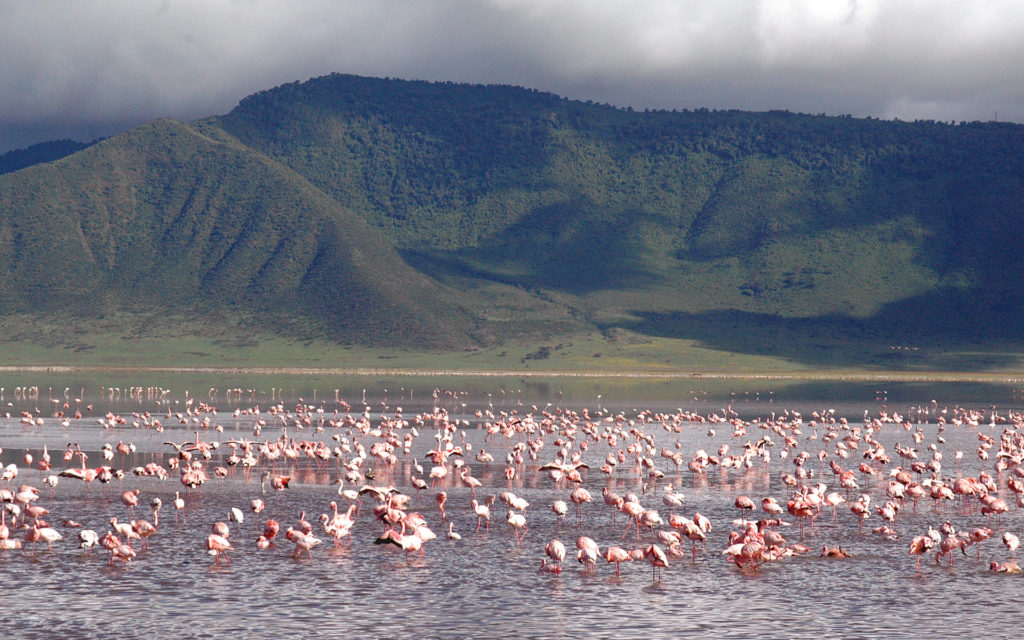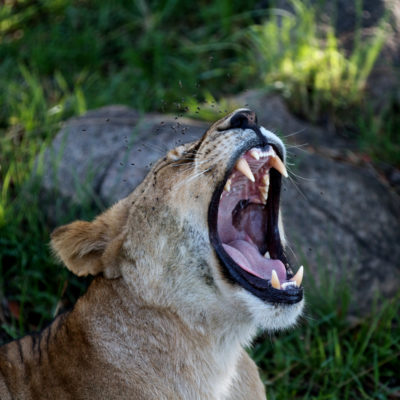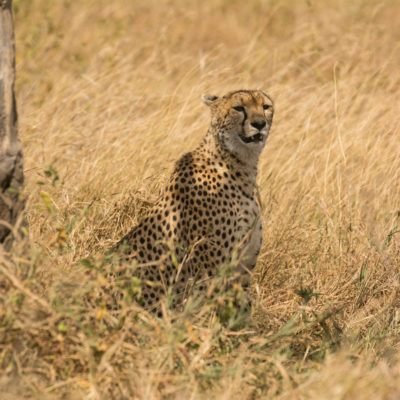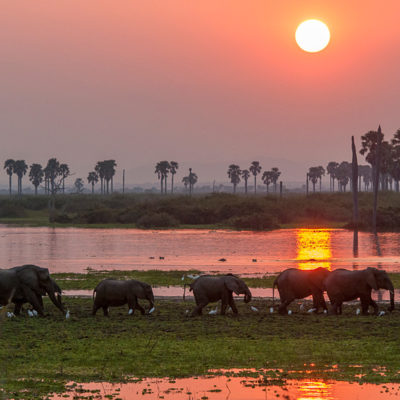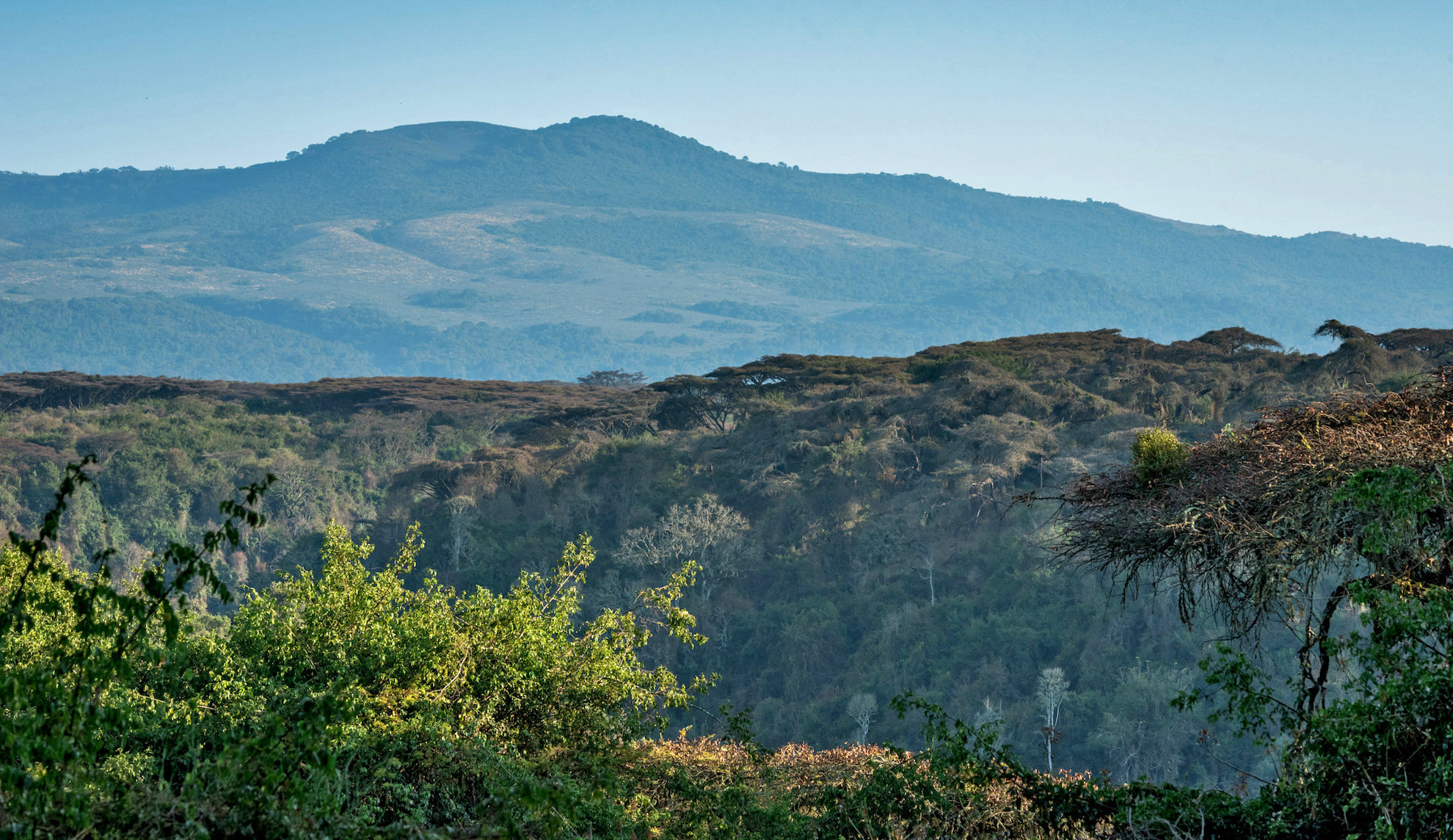
Top 4 Reasons to Visit Tanzania’s Ngorongoro Conservation Area
The Ngorongoro Conservation Area, between the Great Rift Valley and Serengeti, is home to a variety of ecosystems including highland plains, savannah, grassland, forests and marshlands. This creates a diverse landscape that offers habitats well-suited to a wide range of wildlife. Travellers visiting the Ngorongoro Conservation Area can enjoy a number of incredible and unique experiences such as: exploring its nine volcanic craters (one of which is the largest unbroken volcanic caldera in the world), viewing the dense wildlife populations – including the Big 5, observing Ngorongoro’s abundant prolific birdlife, and witnessing the evolution of the human race at Olduvai Gorge.
The walls of the Ngorongoro Crater contain a natural Eden where wildlife thrives and remains largely untouched by the threats posed by humanity. While many of the species can choose to leave this area, Ngorongoro remains rich with both incredible flora and fauna year-round. The Ngorongoro region is breathtakingly beautiful, with sloping hills, deep soda lakes and sweeping plains dotted with forests and brimming with lush vegetation.
Ngorongoro Conservation efforts
The Ngorongoro Conservation Area is home to approximately 30,000 animals incorporating the Big Five, warthogs, wildebeest, impala, zebras and the endangered black rhino. During January and February, travellers can witness the wildebeest calving season, as the Great Migration passes through the northwest of the Ngorongoro area and approximately 8,000 calves are born each day. While giraffes can be found in the conservation area, they do not appear in the Ngorongoro Crater, possibly because the crater’s sides are too steep for them to walk down. The large populations of mammals lure in many predators, including hyenas, leopards, and cheetahs.
The Ngorongoro Conservation Area is also home to 8 prides of black-maned lions, with a total of approximately 70 of these big cats who remain within the natural enclosure formed by the Ngorongoro Crater’s walls. Because the lions never leave the crater, they are descended from a long line of incestuous breeding pairs. This has had a huge negative impact on the felines, with genetic weaknesses being passed on to cubs, resulting in the decrease of their population from the 1980s, when there were over 100 lions residing on the crater floor.
In April 2020, less than half of the Ngorongoro Lion population were adults, and a large number of the cubs and juveniles were not predicted to reach adulthood. To combat this issue, Kope Lion has been working to connect the isolated crater lion prides with lions from Serengeti National Park to broaden their gene pool and establish a healthier crater lion population.
Safari lodges within the Ngorongoro Conservation Area and Serengeti, such as Nomad Tanzania’s Serengeti Safari Camp Central, support the work carried out by Kope Lion, and guests can help these conservation efforts by staying here. Kope Lion, as well as Lionscape Coalition and the Serengeti Lion Project, work with local communities in the Ngorongoro area to prevent conflict between humans and lions.
This stunning section of Tanzania is home to around 40,000 people, living in rural communities. When wildlife and humans are living closely together, predators can attack livestock and prompt retaliation from farmers who are protecting their livelihoods.
In order to mitigate this risk, these projects provide alternative water sources to help keep humans and wildlife separated and encourage the Maasai people to help protect lion populations by teaching the benefits of these beautiful creatures and the tourism that they attract.
This tourism also helps to support Tanzania’s economic growth, but to avoid visitors from damaging the environment and wildlife habitats, the number of tourists to the Ngorongoro is monitored. Approximately 450,000 people travel here each year and all tourists must obtain a permit before entering the Ngorongoro Crater and Olduvai Gorge. This helps to keep tourism sustainable and allow future travellers to continue to enjoy this unspoilt haven.
The Ngorongoro Crater
75 miles outside of Arusha, Northern Tanzania, lies the largest inactive, unbroken and unfilled volcanic caldera in the world and one of the Seven Natural Wonders of Africa. The Ngorongoro Crater was formed approximately 2.5 million years ago when an enormous volcano, believed to be a similar size to Mount Kilimanjaro (between 4,500 to 5,800 metres), erupted and collapsed on itself. Today, the dormant volcanic crater measures 20 kilometres across and 610 metres deep, and is largely filled with sweeping grasslands and lush greenery.
